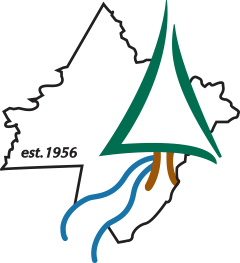News

Water You Know About Source Water Protection?

By Emily Mansfield, PCCD Communications Coordinator
Picture this: after a long day at work crafting thoughtful answers to those endless emails, you’re excited to make your favorite box of mac n’ cheese to relax when you get home. You bring out the stepstool and rummage around in the cabinet above the stove for that last box of mac n’ cheese and then dig through the avalanche of cookware in your other cabinet to finally find a pot. When you put the pot under your tap and turn the water on, that’s probably the easiest part of the process; the water just flows out without any effort on your part, so you hardly ever think about it. Where does that water actually come from, though?
Everywhere in Pike County, it comes from the groundwater! Groundwater is the water stored in the pores of soil and cracks between rock layers underground. The mechanisms in our groundwater wells pump the water up out of that natural underground storage area, or aquifer, and bring it through the plumbing in our homes to the sink, shower, etc. Well, – pun intended- that solves that question. How does the water get into that underground aquifer, though?
Water from rain and snowmelt infiltrates, or seeps into, the pores in the soil and down into the aquifer, or it runs off into streams and other surface waters which are also connected to aquifers. (To learn more about this process in greater detail, check out the article from last month “Dig Deep: The Connection Between Groundwater & Geology.”) Before the water makes its way into the ground, it often runs over impermeable surfaces, like pavement and sidewalks, that don’t have pores for the water to infiltrate through. Then it becomes stormwater runoff. As it moves over these surfaces, it can pick up pollutants including fertilizers, bacteria, oil, and more which then travel with it. To prevent those pollutants from soaking into the soil and the groundwater aquifers we rely on, we need to reduce their presence on the surface.
Luckily, there are some things we can all do to protect this shared resource.
Do you have a dog? When you take your friend outside to relieve themselves, make sure to bring a bag to pick up after them and throw it in the trash. Pet waste left in the yard has bacteria that can be picked up by stormwater and carried with it into aquifers and surface waters – yuck.
Do you have a garden? If using fertilizers or pesticides, be sure to always read the label and use no more than the recommended amount (it’s usually less than you think) and apply long before any predicted weather events. If too much is applied or rain rolls through shortly after application and washes it away, that fertilizer or pesticide can’t all be taken up by the plants you want to treat and instead can end up in the water.
Do you have a car? Be sure to check your vehicle often for any leaks of oil, gas, wiper fluid, etc. Any puddles forming on the driveway or parking lot under the car can be washed away by stormwater and enter the groundwater or surface waters.
Doing the actions above can make a real positive impact on the groundwater aquifers we all use in Pike County. Many of us have wells that are drilled into the same aquifer, and different aquifers are connected. That means that when you protect your water source, you’re also protecting the water source for your friends and family. Check out the Homeowner’s Checklist for A Watershed-Friendly Home under the Education tab on our website to find more ways to be a good steward of our groundwater and watershed.
